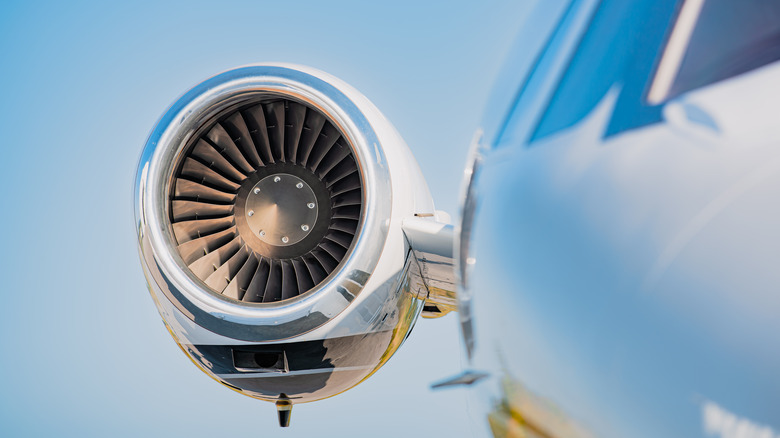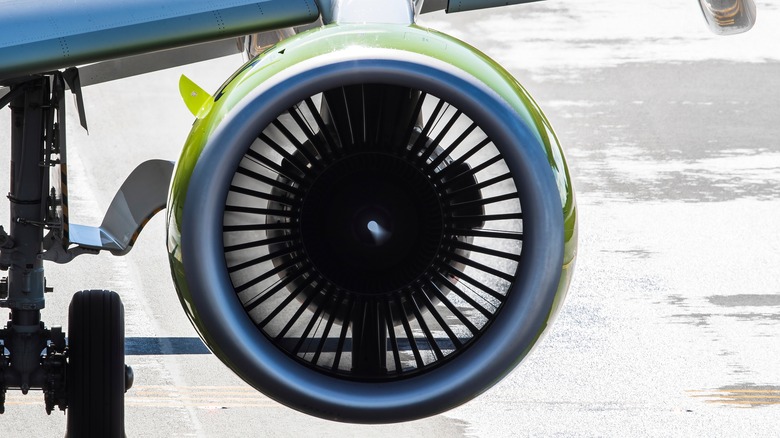What Type Of Fan Is In A Jet Engine And How Does It Work?
If you ask anyone working in the aviation industry what they think the most important component of modern-day planes is, chances are the vast majority may tell you that it is the jet engine. Also known as gas turbines, this modern-day engineering marvel played a significant role in transforming airplanes into one of the most commonly used forms of transportation known to man. Some of these engines have had a lasting impact on the aviation industry as a whole.
Most jet engines of today look nearly identical, with only slight differences in external design helping aviation enthusiasts differentiate between different models. However, a feature common to all these engines is the single, massive fan that covers almost the entire circumference of the engine. As the only visible component of modern-day jet engines and perhaps the most identifiable feature of today's jet engines, it is nigh impossible to miss this significant piece of hardware.
While it is easy for laypeople to mistake these large fans as a simple, not-too-essential part of jet engines, the truth is that these fans might be the most significant upgrade the jet engines have received since these engines burst onto the scene in the mid-60s. In fact, these fans — which go by the name "turbofans" is the very reason modern-day jet engines are called turbofan engines. So, if you're here for a quick answer to what type of fan is used in jet engines, the quick answer would be that it is a turbofan engine, which is a portmanteau of the word "turbo" and "fan"
The role of the fan in turbofan engines
The vast majority of jet engines in operation today are turbofan engines, with these machines also used on several fighter jets. As mentioned earlier, these engines get the "fan" part of their name from the large fan that dominates its front. This fan exists for several reasons, the most important of which is to maximize the amount of air that can be sucked into the combustion chamber of the engine. A direct result of this design is that the engine is able to generate greater amounts of thrust, because of the larger volume of air being directed into the engine.
A unique design feature of turbofan engines is something called the bypass duct which is located around the engines. Besides directing a larger volume of air into the engine's combustion chamber, the fan is also designed to direct colossal volumes of air into those bypass ducts. The bypass duct is wider at the front and tapers towards the rear, a design change that compresses this bypassed air and generates additional thrust in the process.
As a result of this, turbofan engines generate a significant amount of their power through the bypassed air that goes through the bypass ducts around the engines, without the need for additional fuel. These design advantages allow turbofan engines to generate thrust more efficiently compared to older turbojet engines, giving them an edge over turbojet engines as far as fuel efficiency is concerned. These design choices, combined with several decades of refinements to the engine design have also made turbofan engines a lot quieter, further boosting its popularity.

